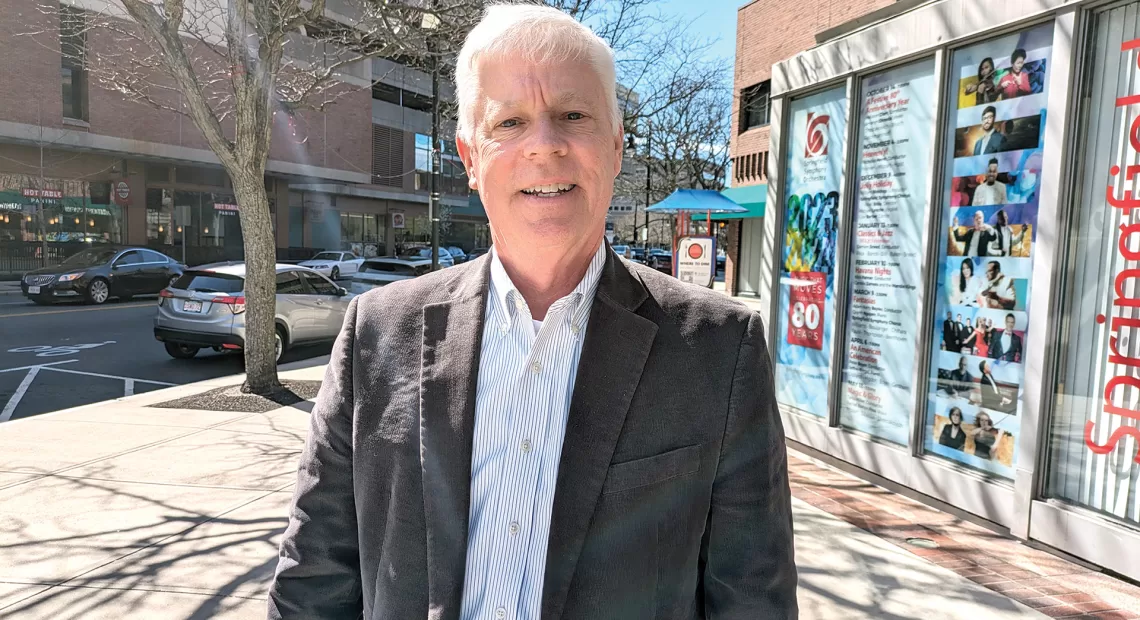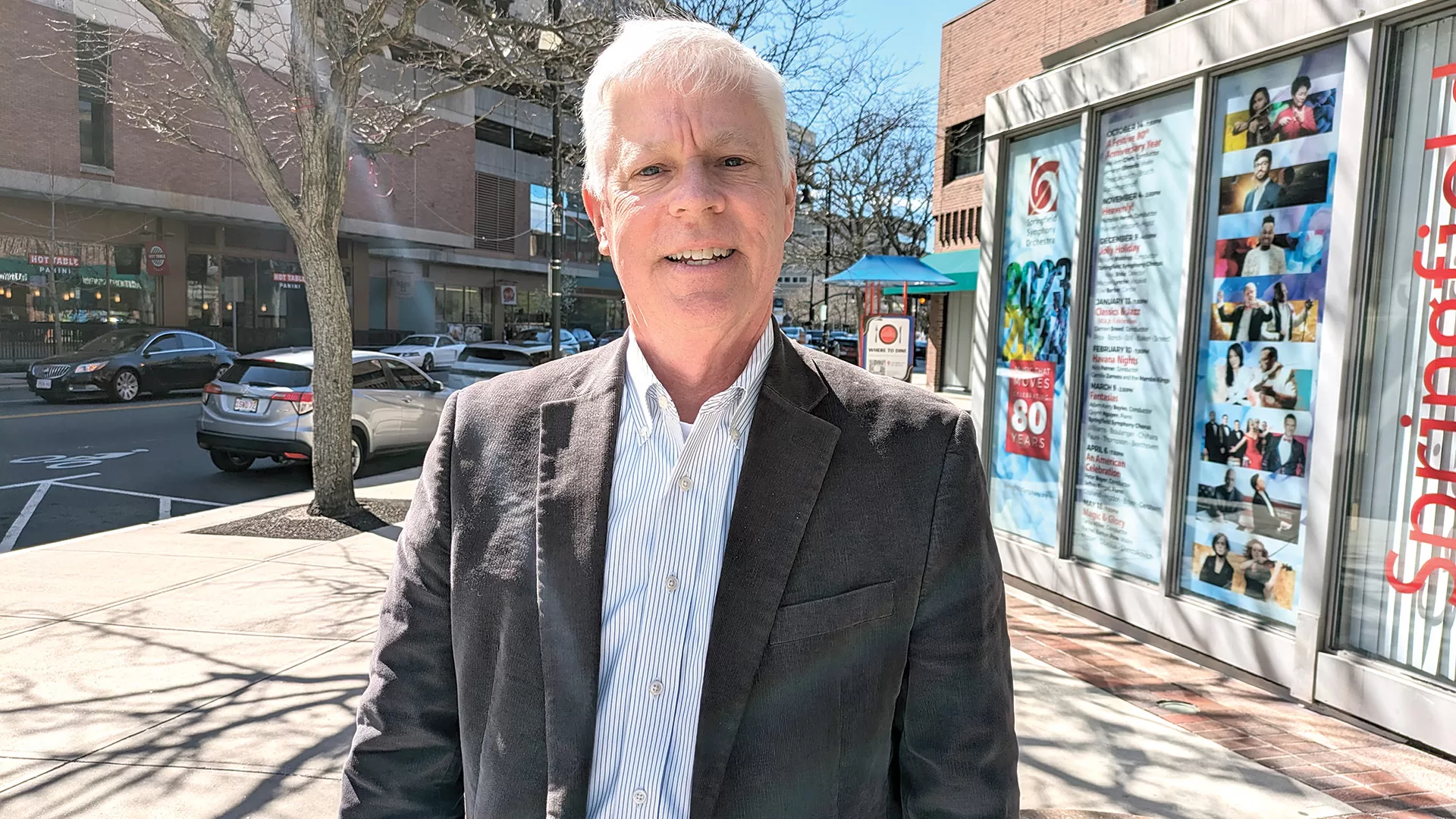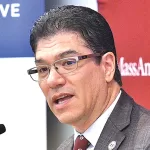
Report Calls for ‘Transformative Investments’ in Key Sectors in Western Mass.
Seed Money

Rick Sullivan says the new report calls for admittedly significant financial investments — but that other regions have met such challenges with positive results.
The surprise was food science.
At least, that industry’s prominent place on a recent report outlining economic potential in Western Mass. was a mild surprise to some, Rick Sullivan said, but maybe it shouldn’t have been.
The report in question — commissioned and funded by the Western Massachusetts Economic Development Council (EDC) and produced by MassINC and Cambridge Econometrics — is called “Accelerating Inclusive Growth in the Pioneer Valley: A Prospectus for Transformative Investment.”
At its heart, it determines that the Pioneer Valley has considerable strength in certain industries and technologies poised to grow with the transition to a low-carbon future, specifically detailing competitive advantages — and, hence, major economic opportunity — in the realms of food science, advanced materials, and clean energy.
Sullivan, EDC president and CEO, noted that Big Y Executive Chairman Charlie D’Amour, who sat on the project’s advisory group, knows his way around matters of food science, food security, and food-delivery systems. “And I think he didn’t even have any idea about how deep the work being done at UMass was and their leadership position in this field, and how we could tie it all in together. I mean, UMass has the number-one food-science program in the country. Who knew?”
When the report was released last month, D’Amour noted that Western Mass. should capitalize on disruptive changes in the food industry. “From biotechnologies under development at UMass to innovative efforts to support local food entrepreneurs, the Pioneer Valley is situated to generate broadly shared wealth, positioning itself as a leading producer of sustainable food products.”
The report makes a broad case for transformative investment, pointing out data showing that:
• The Pioneer Valley retains manufacturing strength, but lacks growing industry clusters;
• The Valley is underperforming relative to its potential to conduct research and development and commercialize new technology;
• GDP per capita in the Pioneer Valley is half that of Greater Boston and below the metro-area average for the U.S., heightening the need for new, high-growth clusters;
• Inflation-adjusted median household income in the Pioneer Valley grew by less than 5% over the past decade, compared to nearly 9% nationally and 12% for Massachusetts statewide; and
• High concentrations of poverty undermine the potential of the region’s future workforce.
The report also details success stories of transformative investment to the east and west, with high returns on investment: the Albany, N.Y. nanotech cluster, which drew on hundreds of millions in state funding and tax incentives; and the Worcester health research and biomanufacturing cluster, which is similar to the Albany model but achieved over a longer time period and with more modest state investment.
Javier Reyes
“As the Commonwealth’s land-grant university, our researchers make new discoveries and develop technologies that support local industry and prepare the workforce required for the Commonwealth to flourish in the decades ahead.”
“The Pioneer Valley certainly has the preconditions to compete globally in knowledge industries — it is home to the University of Massachusetts flagship campus at Amherst, along with 10 four-year colleges and three community colleges. Together, these institutions develop an enormous amount of talent, as well as a significant volume of basic and applied research,” the report notes, also highlighting the region’s abundant outdoor recreation opportunities, strong healthcare and hospital systems, an international airport, advanced manufacturers, and a rich food ecosystem, from farmers and specialty food producers to larger-scale food manufacturing.
Hence, the region is ripe for dramatic investment and growth in general, and in the three sectors the report focuses on — food science, advanced materials, and clean energy — specifically.
“With these indisputable economic assets, it is striking how little proactive economic-development investment the region has seen in the past several decades,” it continues. “Blinded by Boston’s enormous output, it is difficult for many to appreciate the true potential of the Pioneer Valley.”
UMass Amherst Chancellor Javier Reyes agrees. “UMass Amherst is committed to working closely with our partners in Western Massachusetts to play a central role in fostering economic development and growth for the benefit of our region,” he said. “As the Commonwealth’s land-grant university, our researchers make new discoveries and develop technologies that support local industry and prepare the workforce required for the Commonwealth to flourish in the decades ahead.”
But, as we will see, investment means money — lots of it.
Not a Small Ask
Specifically, the report calls for establishing what it calls a Fund for the Pioneer Valley — a dedicated pool of resources for transformative investment in advanced industries that positions the region for growth while supporting the state’s overall economic-development strategy as it relates to the clean-energy transition.
Charlie D’Amour
“From biotechnologies under development at UMass to innovative efforts to support local food entrepreneurs, the Pioneer Valley is situated to generate broadly shared wealth, positioning itself as a leading producer of sustainable food products.”
Based on similar efforts, the report calls for committing at least $50 million per year in state resources to targeted economic investments in the Pioneer Valley over a 10-year period: $400 million for a strategic portfolio of innovation investments, $90 million for site development, and $10 million for economic-development implementation capacity.
To help ensure that the fund makes worthy investments and that it fully leverages the state’s capital, the report continues, each allocation should leverage additional federal and private investment at a ratio of at least one-to-one, resulting in at least $1 billion in total investment in the Pioneer Valley economy over the next 10 years.
“I’ll be the first one to sit here and say that’s a big number,” Sullivan told BusinessWest, but the results of similar efforts in places like New York and Georgia have borne fruit, and investments in IT, life sciences, and even offshore wind in the eastern part of the Commonwealth haven’t generated much spillover for the Pioneer Valley economy — meaning this region needs its own targeted strategy.
“Is there a component where we will seek state investment? Yes. Will it involve federal investment? We hope so. But at the end of the day, if it’s going to truly be successful, there has to be the private investment on the other side,” Sullivan added, pointing to the example of Clean Crop Technologies, which BusinessWest profiled in its March 18 issue, and which hopes to revolutionize food safety and production in the green-tech sector.
“Other companies are, if not outright investing in Clean Crop, they’re working with or contracting with them. Those are dollars that are coming into the region from well outside the region, and from companies that have typically not played in this region,” Sullivan explained.
“So for this to be successful for the long term, there absolutely has to also be that private investment. This cannot just be a government initiative. It can start as a government initiative, but it clearly must have private investment.”
While the federal government has been discussing ways to transition to a low-carbon future — and, in so doing, spur new forms of economic activity in metropolitan areas across the U.S. — Gov. Maura Healey has called for the development of a clean-energy corridor across all of Massachusetts, and the investments suggested in the report could dovetail with that effort.
Jay Ash
“This research illuminates promising opportunities unique to the Pioneer Valley as we develop low-carbon technologies. We must work together to help the region tap these opportunities to generate strong and equitable growth.”
“This research illuminates promising opportunities unique to the Pioneer Valley as we develop low-carbon technologies,” said Jay Ash, president and CEO of the Massachusetts Competitive Partnership. “We must work together to help the region tap these opportunities to generate strong and equitable growth.”
In the clean-energy realm, the report notes that the Valley has been a regional leader in clean energy, with ISO New England headquartered in Holyoke, extensive hydroelectric power (Holyoke Gas & Electric and FirstLight), early adoption of solar generation (conversion of the Mount Tom coal-fired power plant), and an effort to promote equitable business ownership and workforce training in the sector in partnership with the Emerald Cities Collaborative.
“Despite these advances, the region has struggled to define its economic role in the clean-energy transition,” it adds. “A robust strategy is critical because the clean-energy transition is the largest market opportunity by several orders of magnitude. Efforts to decarbonize the economy are drawing $2.8 trillion in investment globally each year, and estimates suggest spending must increase to $4.5 trillion annually to reach net zero by 2050. The Healey-Driscoll state economic-development plan seeks to position the entire Commonwealth to complete for this investment.”
Clean tech is a broad umbrella, Sullivan said, and includes the region’s broad research involving water — security, delivery systems, purification, and more — much of it from UMass, but also from a host of small companies.
“There’s a real opportunity to grow that. We’re looking at sectors that are only going to be more important in five and 10 years, not less,” he added. “The issues around water — water purity, water scarcity, water delivery — those aren’t going to go away. And they’re international problems. So that market is always going to be there. It’s an area that will grow.
“It’s the same thing with food,” he went on. “With climate change and global warming, the issue of how we raise, grow, deliver, and manufacture food isn’t going away. These are transformative in the sense that they’re sectors that are not totally built out — and they fit into the fabric of who we are as a community. They are environmentally based for the most part, particularly food science and clean tech. And they’re not going to go away.”
Drawing on Strengths
The report, which also drew financial support from the Community Foundation of Western Massachusetts, the Davis Foundation, MassDevelopment, and the Massachusetts Competitive Partnership, is available online at www.westernmassedc.com/wp-content/uploads/2024/03/white-paper-FINAL.pdf, and includes exponentially more detail than this article can convey, including specific ventures (along with specific dollar figures) by which the sectors of food science, advanced-materials, and clean energy may be cultivated.
The vision is to create clusters that become nationally recognized, drawing more companies and more investment, and make Western Mass. a dynamic and attractive place to launch businesses of all kinds, raising all boats, so to speak.
That was the goal of the Georgia Research Alliance (GRA), established in 1990. That nonprofit, public-private partnership was created to help industry, research universities, and state government agencies collaborate to build a technology-driven economy fueled by advanced research.
The state of Georgia provides the alliance with about $23 million annually to support its operations, from recruiting top research talent to building state-of-the-art labs. GRA also provides seed funding, legal assistance, and other services to support the researchers as they work to move their discoveries to the marketplace.
The result? Since its founding, GRA estimates it has produced a return on investment approaching $12 billion.
“We didn’t invent that model. That’s what’s happened in biotech, and that’s what’s happened in Upstate New York and in Georgia,” Sullivan said. “We’re looking to be the catalyst to get this thing to move, to show that it can work. Somebody has to tell the story of why this makes sense for Western Mass., and that’s an important part of this report. That, and we had to pick sectors that made sense.”
Ben Forman, MassINC research director and co-author of the study, is eager to see the state act with urgency.
“We have overlooked the Pioneer Valley for decades, jeopardizing its economic base,” he said. “It’s time to recognize and build on the region’s considerable economic assets.”








